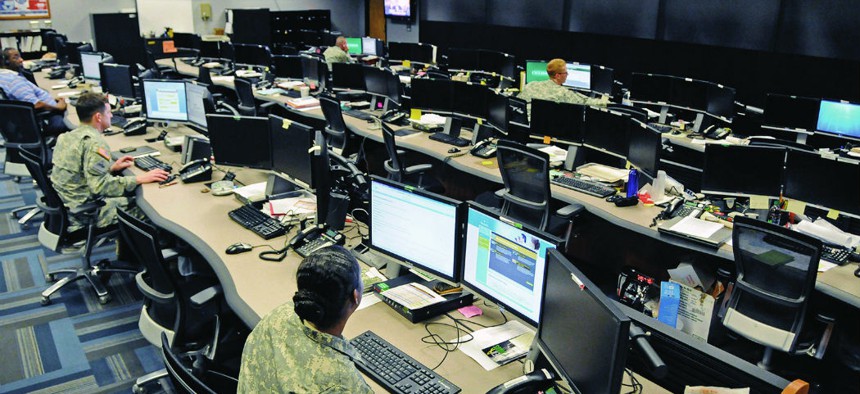Air Force Research Lab supports DCGS hybrid cloud tech
A Hybrid IT cloud approach allows DCGS to extend and maintain data systems without needing to build additional infrastructure.
The Air Force Research Laboratory (AFRL) is intensifying collaboration with private sector firms to maintain and upgrade software, hardware and hybrid cloud services for its Distributed Common Ground Systems (DCGS) intelligence database, service officials said.
Air Force DCGS Program Manager Col. Kristopher Gifford said keeping pace with emerging IT advancements through open architecture and sustaining fast-pace maintenance of DCGS systems needs to be closely intertwined with private sector commercial-off-the-shelf technology.
“The biggest challenge is providing open architecture and open government-owned standards and doing this in parallel with sustaining legacy systems,” Gifford added, speaking recently at a Northern Virginia Armed Forces Communications and Electronics Association gathering.
A hybrid IT cloud approach allows DCGS, or the AN/GSQ-272 Sentinel weapons system, to extend and maintain data systems without needing to build additional infrastructure. The idea is to leverage the advantages of cloud services and add system health monitoring and cloud security.
The AFRL recently completed a five-year arrangement with Zenoss to sustain and modernize DCSG infrastructure, while performing the requisite analytics.
Zenoss operates 27 regional sites which deploy DCGS in both secure and non-secure locations.
A primary thrust of the firm’s work is to diagnose and fix software or network computing problems before they become problematic. Identifying problem areas or potential patterns of concern can allow operators to be more proactive and predictive in their maintenance cycle, Brian Wilson, Senior Vice President of Customer Success, Zenoss, told Defense Systems in an interview.
“We provide visibility and actionable insight into the health of the running of the weapons systems. We have an integral role in ensuring that the assets are performing well,” he added.
This Air Force-Zenoss approach uses an installed software product that detects elements that are in DCGS’ routers, end points and storage areas.
“We look back in time and watch the performance of the devices. This can give operators an immediate alert that there may be a problem and provide immediate remediation steps,” Wilson added.
NEXT STORY: NGEN-R redraws acquisition plan





